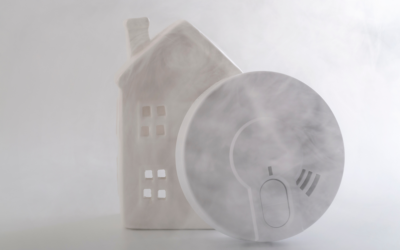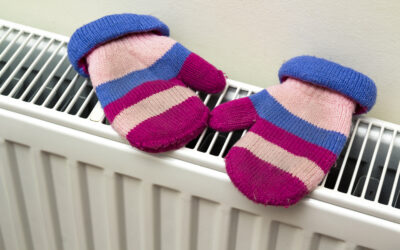Fall is a beautiful season, marked by colder temperatures and shorter days. It makes it easy to cozy up under your favorite blanket and enjoy autumn in the comfort of your home.
The beginning of fall also marks the beginning of National Healthy Lung Month. Running through October, the month focuses on prioritizing your respiratory health. While pledging to put out that cigarette or exercise regularly is a great way to take part, there is an unseen way that affects people’s respiratory systems far more than they realize: indoor air quality.
Indoor air quality can vary between environments, such as your home, school, office, and any other indoor space you may frequent. According to the Environmental Protection Agency, the average person spends 90% of their time indoors.
Without proper ventilation, breathing hazards can quickly accumulate in these indoor settings. Research shows that the levels of certain air pollutants can be two to five times higher indoors than outdoors. This exposure to pollutants can begin to negatively affect your health with time.
As cold and flu season begins, good ventilation and air quality in your home is a great way to stop the spread of illnesses.
Indoor pollutants increase the risk of breathing problems, asthma, and other respiratory issues. This is especially true for at-risk populations, like people over 65 and children under 5, who are more vulnerable to the effects of poor air quality.
The rise of remote work over the past five years means many people spend more time at home. This shift allows you to prioritize your safety and well-being within your own space.
There are several tips you can follow to improve your indoor air quality.
What determines Good Air Quality?
Air enters and leaves buildings in three ways:
- Infiltration: occurs when outside air flows through cracks, openings, windows, and other gaps
- Natural ventilation: occurs when windows are opened, allowing fresh air to enter through temperature differences and the wind.
- Mechanical ventilation: uses outdoor vented fans and HVAC systems, which regulate heat, cold, and airflow.
When the building’s air exchange rate remains low, air quality deteriorates. This leads to a build-up of pollutants in the space. Proper ventilation is important to maintain a healthy indoor environment.
Outside air carries many pollutants, including dust, allergens, mold spores, and more. Natural ventilation methods can bring these contaminants indoors. HVAC mitigates this by passing air drawn from outside through filters. These clean the air, and with regularly changed filters, your indoor environment remains clean and healthy.
Common Indoor Air Pollutants
Many pollutants can impact indoor air quality. The main culprits are indoor pollution sources that release gases and particles into the air, but other allergens can also contribute to coughing and sneezing. Without clean air to dilute these particles, air quality suffers.
Here are a few of the many sources of air pollution:
- Gas appliances
- Smoking indoors
- Building materials that contain formaldehyde
- Pet dander and smoke
- Central heating and cooling systems
- Excess moisture
- Outdoor sources, such as allergens, pesticides, and pollution
- Poor ventilation
Many common pollutants come from within the home, but outdoor pollutants contribute when they are tracked indoors on people’s clothes and shoes.
The Role of Humidity
Humidity levels can significantly influence pollutant concentrations in the air. Higher humidity tends to trap pollutants in water vapor, which leads to a buildup of substances. Not only this, but higher humidity levels often lead to stronger odors.
Drier air isn’t without its problems, spreading bacteria and viruses easier than more humid environments. Plus, dry air can leave you with nosebleeds and make you cough.
The healthiest homes sit right in the middle, around 40% to 60% relative humidity. This can be tested using an indoor digital thermometer or a moisture meter. Based on your readings, you can use a dehumidifier if the air is too damp or a humidifier if it’s too dry.
Improve Indoor Air Quality.
The primary sources of pollutants are combustion appliances used for heating and cooking. Nearly 40% of Americans own a gas stove, and while electric stoves are more common in the South, there are several solutions you can implement to improve indoor air quality.
- Change your air filters four times a year.
- If you do not do this, the air that travels through your ductwork deposits these allergens and pollutants.
- Keep your gas appliances in working order.
- Check your hoses semi-annually to see if repairs are needed.
- Install Carbon Monoxide monitors
- Some fire alarms contain CO monitors, and with a bitterant in natural gas, the smell of a leak tends to be noticed quickly. Despite this, installing carbon monoxide monitors near your water heater and stove is a good practice that could save your life.
- Keep your home ventilated while cooking
- Opening windows or using the vent hoods are a great way to keep air circulating throughout your home while you’re cooking. This ensures that pollutants vent outside.
- Use HEPA filtration systems
- These systems work for wood-burning stoves and furnaces, protecting the area from soot and smoke.
- Transition to electronic appliances
- Not only does this protect you and your family against pollutants, but it is more efficient than its gas counterpart.
Conclusion
As we continue to enjoy the beauty of fall, don’t forget the importance of creating a cozy and pollutant-free home! This October, as we celebrate National Healthy Lung Month, take a moment to ensure that your indoor environment is supporting your well-being rather than hindering it.
You can start with simple steps, like changing your air filters regularly and checking the humidity levels in your home. These two actions alone can significantly reduce many common air pollutants, helping to ensure the air you breathe is clean and healthy.
By making informed choices today, we can protect our respiratory health for the future. So, let’s commit to creating spaces that support our well-being, allowing us to fully enjoy the cozy comforts of fall.




